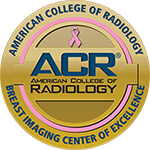Breast Center
Make a New Mammogram / Breast MRI Appointment:
Call 202-741-3036
Make a New Breast Biopsy Appointment:
Call 202-741-3064

Services We Offer and Conditions We Treat:
- Biopsy
- Breast surgery
- Chemotherapy and radiation
- Navigation
- Advanced digital imaging
Breast cancer takes patients down paths they never expected. The GW Comprehensive Breast Center offers a fully integrated road map to navigate the way. Our Center provides multi-disciplinary breast care services for the early detection, diagnosis, and treatment of breast cancer using state-of-the-art technologies unavailable at any other breast center in the Metro Washington, D.C. area.
Appointments
For Mammograms / Breast MRIs: 202.741.3036
For Breast Biopsies: 202.741.3064
Combining state-of-the-art technology with superior medical and surgical care in partnership with The George Washington University Hospital, our Center has been awarded a three-year full accreditation by the National Accreditation Program for Breast Centers (NAPBC) for providing quality evaluation and management of benign and malignant breast disease.
Our Facility & Services
With an open design and spa-like interior, our Center is a comforting setting for patients to receive comprehensive breast care by our internationally recognized specialists who care only for the breast, including our all-women team of skilled breast surgeons who perform advanced surgical procedures.
As a designated Center of Excellence by the American College of Radiology for stereotactic breast therapy, breast ultrasound and ultrasound-guided biopsy, our facility provides patients with access to a full range of advanced breast imaging technology and the latest minimally invasive treatments.
News & Information
October is Breast Cancer Awareness Month, and according to the National Breast Cancer Foundation, every two minutes a woman is diagnosed with breast cancer. When it’s caught early, before it’s had the chance to spread, however, the five-year survival rate for patients is 99%.



